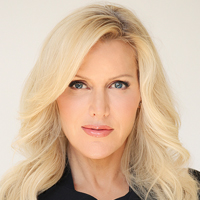
Continuing a trend that began in the 1970s, two-income households are becoming more the rule rather than the exception. For reasons of both financial expediency and personal fulfillment, more and more couples are pursuing individual careers while partnering to maintain the household. This is certainly no secret to most advisors, who have seen the percentage of their client base made up of two-income families increasing steadily over the past years.
Planners are also accustomed and skilled at having “the talk” when clients are preparing for retirement. It’s typically one of the most crucial passages that an advisor must travel with a client, as they make important decisions with long-lasting implications about claiming Social Security, receiving pension income in the best way, developing a draw-down strategy, re-evaluating risk profiles, and other major strategic and income changes that are typically part of the retirement transition.
But what happens when one partner is ready to retire and the other isn’t? Whether because of age difference, a shift in personal priorities, or other reasons, each partner in a union may be on a different timetable for stepping out of the day-to-day demands of the workforce. Though we often assume that couples tend to retire at the same time, a 2018 Fidelity study found that 43% of people disagreed with their partner about when to retire. In fact, the younger the couple, the more likely they were to disagree.
It’s Not Always About the Money …
And, by the way, the disagreements aren’t always about the finances. When one partner retires while the other continues working, there are significant social and relational issues that require discussion and clear communication in order to avoid the type of discord that can lead to an uncomfortable household.
In fact, in Part 2 of this article, we’ll take a look at some of the issues around “asynchronous retirement” that, while non-financial in nature, are nevertheless crucial to have on the table. As a trusted advisor, you are probably the ideal person to make sure these matters are thoroughly discussed.
… But It’s Always About the Money Sometime
But for now, let’s focus closely on some of the financial conversations that need to happen. Obviously, it’s important for the couple to accurately anticipate the level of household income available when the first spouse retires and to be certain that level is adequate for their desired lifestyle. As a financial advisor, it is incumbent upon you to provide your clients with accurate forecasting around these issues that accounts for the different target dates for retirement, as well as the sources and amounts of income available to the retiring spouse. This includes pensions, Social Security, and proceeds from retirement and other investment accounts.
Also, the timing around claiming Social Security benefits deserves careful consideration. While typically the higher wage-earner will receive the larger benefit, it’s important to compare the other partner’s spousal benefit with what they can receive based on their own earnings record.
This brings up the matter of retirement budgeting. Advisors need to be sure there are no “hidden expenses” or unexamined assumptions, which can show up from unexpected sources.
For example, the wife of a client couple of mine was an avid member of a riding club, a weekend pastime that her husband had always cheerfully subsidized. When he announced his upcoming retirement, we had to take a careful look at his sources of income. After all, horses need hay, veterinary attention, and stabling, whether they’re being ridden or not. I was able to help them make sure that she would be able to continue enjoying her equine obsession, even as her hubby was transitioning out of the regular career routine.
What About Insurance?
Then there’s medical insurance. In many cases, the higher wage earner will be providing coverage for both spouses via a workplace-sponsored plan. But if the higher wage earner retires and enrolls in Medicare before the still-working spouse is eligible, how will they manage the working spouse’s medical coverage?
In some cases, the spouse who is still working will have access to an employer-sponsored plan, but in others, the cost of providing coverage will need to be factored into the retirement budget. For example, suppose the working spouse’s current employment is less than secure. You can’t afford to let your clients go into an uncertain future without a backup plan for medical coverage.
Involuntary Retirement
As we also know, people are sometimes forced to move up their retirement plans, leaving the workforce earlier than they intended. Of course, over the past two years or so, the COVID-19 pandemic has caused many to exit the day-to-day grind. In fact, in 2020, the percentage of baby boomers taking retirement jumped by 3.2%, a rate not previously seen since the Great Recession and more than double the rate of 2019.
But beyond the pandemic, other factors consistently result in early retirement: health issues; negative changes in employment, including layoffs; and family changes such as the illness of a spouse, a change in marital status, or the need to provide care for an aging relative. Here again, planning and preparation are everything. Your work with your clients should always include asking the “what if” questions that most of us would rather avoid.
And then, the all-important next step is developing a plan to address the consequences of such potential circumstances. Are the clients currently making systematic, healthy contributions to retirement accounts or employer-sponsored plans? Do they have assets that could be liquidated to provide a financial cushion in the event of a forced retirement? Can their budget be reconfigured to allow them to live comfortably on the resources available to them?
In a future article, we’ll go into the non-financial ramifications when spouses retire at different times. But responsible advisors who help clients focus on the money issues mentioned above will have taken a major step to ensure that they are preparing their clients for a secure, comfortable financial future, post-retirement.
Kimberly Foss, CFP, CPWA, CFT-I candidate is president and founder of Empyrion Wealth Management and author of “Wealthy by Design: A 5-Step Plan for Financial Security.” Kimberly combines a technical expertise with a real passion for her work with her clients, including family stewards, women in transition and thriving retirees. She regularly shares her financial expertise with leading media outlets. In 2021, Kimberly was named to Investopedia 100 Top Financial Advisors and awarded as a ThinkAdvisor LUMINARIES.







